Are you looking to add a splash of color to your indoor garden? The Anthurium regale is a fascinating plant that can add a touch of exotic beauty to any home. With its lush, glossy foliage and striking blooms, this tropical evergreen can add a unique touch to any indoor garden.
In this article, we’ll discuss the basics of Anthurium regale care, as well as some tips that indoor gardeners should keep in mind when growing this beautiful plant. With the right care, you can enjoy the beauty of the Anthurium regale in your home for many years to come.
What are Anthurium Regale Stripes?
Anthurium regale stripes are narrow, light green stripes that run the length of the leaf. They are most noticeable on the upper surface of the leaf, but can also be seen on the lower surface. Anthurium regale stripes are a sign that the plant is healthy and is responding to the environment. The leaves are large, dark green and deeply veined with a glossy sheen. Anthurium regale’s velvet-like blooms make them stand out on any shelf or table top. Although not fragrant, they certainly make up for it with their striking beauty! Not only are these plants aesthetically pleasing but they also help filter indoor air pollutants such as formaldehyde, ammonia, xylene, and toluene making them great for any home or office environment.
Origin and Family Of Regale Plant
Anthurium regale is native to the Caribbean Islands, Central America, and northern South America. It belongs to the family Araceae and has become increasingly popular in recent years as an ornamental houseplant.
The flowers of this tropical species have long been admired for their intense colors ranging from deep purples to bright reds.
Rare to Find
Anthurium regale, also known as the Regal Lily or King Anthurium, is a rare and exotic flower species native to Colombia. This distinctive flower, with its glossy leaves and vibrant red hues, has become increasingly difficult to find in recent years. The scarcity of this particular variety of anthurium highlights the need for conservation efforts to preserve these unique specimens
Growth Rate
Anthurium regale is a slow-growing flower that can take up to five years before it reaches maturity. It requires warm temperatures, high humidity levels and plenty of filtered light in order to thrive. Due to its sensitive nature and limited natural habitats, Anthurium regale is becoming increasingly scarce in nurseries across the world.
Size of Mature Anthurium Regal
The size of mature Anthurium can vary depending on the environment in which it grows. In most cases, it can reach up to 4 feet in height and 2 feet wide when grown outdoors. When grown indoors as a houseplant, however, Anthurium regale typically only reaches about 1 foot tall with a spread of 10-12 inches wide.
Appearance of Anthuriums Flowers
Anthurium regale is an attractive flowering plant that can be found in many gardens having white flowers with long, purple bracts and red berries. The flowers are typically a deep purple, but can vary in color. The plant typically grows to a height of about one foot, but can grow taller in favorable conditions. Anthurium regale is a hardy plant that can survive in a variety of climates.
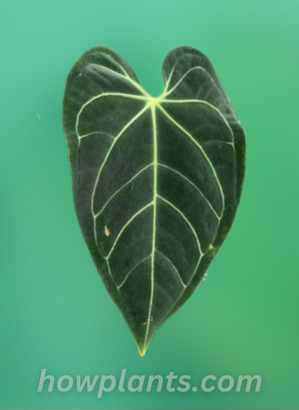
Ideal Pots for Anthurium Regale
Pots typically comes in medium to large sizes, there are different plant sizes available that require different types of pots.
For Smaller plants, 4-6 inch diameter pots will suffice. The potting soil should be light with good drainage and mixed with perlite and sand for aeration.
Medium sized plants are best suited for 8-10 inch diameter pots. Potting soil should also be light but can hold moisture better than the small ones; therefore a mixture of peat moss, vermiculite and compost is recommended in this case.
It should be a well-draining pot and has a wide opening at the top. This makes it easy to water the Anthuriums and to remove any excess water. The Anthurium regale pot should also be deep well so that they will be perfect for planting the Anthuriums.
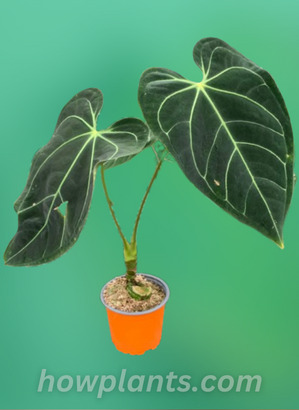
When to Repotting?
Repotting should be done once every two years, or whenever the roots of the plant are visible through the drainage holes of its container. The best time for repotting is during the warmer months of spring or summer when temperatures are higher, as this allows plenty of time for new root growth before colder weather arrives.
When repotting an Anthurium regale, perform the following steps:
- Remove any old soil and debris from the rootball.
- Fill a container two-thirds of the way with fresh potting soil.
- Place the Anthurium regale in the soil, making sure the root ball is well-covered.
- Water the Anthurium regale well and then wait until the soil is dry before adding more water.
- Fertilize the Anthurium regale once a month with a balanced fertilizer.
Guidelines to Care Anthurium Regale
To care for Anthurium regale, begin by removing any dead leaves. Next, water the plant regularly, keeping it moist but not soggy. Fertilize it monthly with a balanced fertilizer. Finally, keep Anthurium regale away from direct sunlight, and away from cold drafts.
Soil Composition
Anthurium regale prefers well-drained organic soil that is the mixture of orchid bark, pertile, sphagnum moss and charcoal. This orchid is tolerant of a wide range of soil moisture levels, but prefers moist soils. This plant also prefers sandy soil. Soil mixture should be dumped for the plant’s best growth but at the same time avoid too much wet soil.
pH Requirements
The pH requirements for Anthurium regale are not well known, but it is likely that they are similar to other Anthurium species. Anthurium regale is likely to prefer a pH range of 6.0-7.5.
Water Requirements
Anthurium regale, a species of Anthurium, is a water-loving plant. It needs about 1.5 gallons of water per day to grow, and it prefers moist, well-drained soil. This plant also needs moist soil that drains well; allowing the soil to dry out between waterings will help prevent root rot from occurring.
Light and Temperature Requirements
The plant requires a well-lit area with plenty of indirect sunlight, but can also tolerate partial shade. The soil should be well-drained and contain a good amount of organic matter. Anthurium regale prefers temperatures between 18 and 25 degrees Celsius.It prefers warm temperatures above 70 degrees Fahrenheit and light shade or indirect sunlight.
Fertilizers
Anthurium regale needs a balanced mix of nitrogen, phosphorus, and potassium to grow and thrive. Different fertilizers work best for different plants, so it is important to consult a gardening expert to find the right one for Anthurium regale. A fertilizer such as 10-10-10 or 15-15-15 will work well for this orchid.
Pruning
Anthurium regale is a beautiful and exotic plant that can be pruned to keep it looking its best. Pruning can be done in a number of ways, but the most important thing is to keep the plant in balance. Too much or too little pruning can cause the plant to become unbalanced and unhealthy.
First make a list of the areas that need to be trimmed.
Next, use a sharp knife to cut the desired amount off the stem. Be careful not to cut into the leaves or the flowers.
Finally, use a garden hose to water the newly cut stem to help it heal quickly.
When to Replant the Anthurium Regale?
When to replant an Anthurium regale is a question that can be answered in a variety of ways. Some people recommend replanting Anthurium regale every two to three years, while others may wait five or six years. Ultimately, it is up to the individual gardener to decide when to replant Anthurium regale.
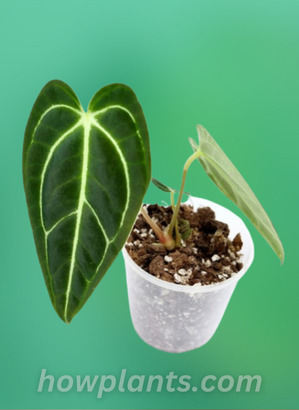
Diseases and Pests
Anthurium regale is susceptible to a number of diseases and pests, some of which can be destructive.
Anthurium suckers
Anthurium suckers damage the Anthurium regale by invading and taking over the plant’s root system. This can cause the Anthurium regale to become stunted and less able to grow. Additionally, the suckers can block the flow of water and nutrients to the Anthurium regale, which can lead to the plant’s death.
Spider mites
Spider mites are tiny, eight-legged creatures that feed on plant sap. They can quickly damage an Anthurium regale, causing leaves to curl, yellow and fall off, and the plant to become stunted and weak. Spider mites also produce a sticky substance that can clog plant pores, reducing water and nutrient absorption.
Aphids
Aphids are small, soft-bodied, pear-shaped insects that feed on the leaves of plants. They can cause significant damage to the Anthurium regale, a type of flower that is used in ornamental gardens. Aphids suck the sap out of the leaves, which can lead to the leaves becoming dry and brittle. This damage can also cause the leaves to fall off the plant. Aphids also produce a sweet substance called honeydew, which can attract other insects and cause damage to the plant’s leaves and branches.
Root rot
Root rotdamages the Anthurium regale by causing the plant to lose water and nutrients. This can lead to the death of the plant.
Tips to treat Disease
Here are some tips on how to treat diseases and pests that attacks Anthurium regale:
- Clean the plant regularly with a mild soap and water solution. Make sure to remove any debris, leaves, or flowers that may have accumulated on the plant.
- Fertilize Anthurium regale with a balanced fertilizer according to the label instructions.
- If the plant is being attacked by a disease, use a fungicide to treat the plant.
- If the plant is being attacked by a pest, use a pesticide to treat the plant.
Procedure to Propagate Anthurium Regale from stem cutting?
If you have a stem cutting of Anthurium regale, the easiest way to propagate it is by taking a small piece of the stem.
- For it, select the best stem from the mother plant and cut it with sterilized scissors. The selected stem should not be more than 6 inches long and must have 2 leaves on it. Root your cutting in soil. Gently press the soil so that no space between soil particles and stem will be left empty.
- Water it regularly and maintain 60% humidity as this plant loves a humid environment.
- Place it at the angle that it will receive indirect light.
- Within 6 weeks it will grow roots.
Growing Anthurium in Water
There are a few ways to grow Anthurium in water. The easiest way is to take a cutting from an Anthurium plant and place it in a pot of water. Make sure to change the water every day and keep the plant well-watered. Another way to grow Anthurium is to take a stem cutting and place it in a pot of water. Make sure to change the water every day and keep the plant well-watered.
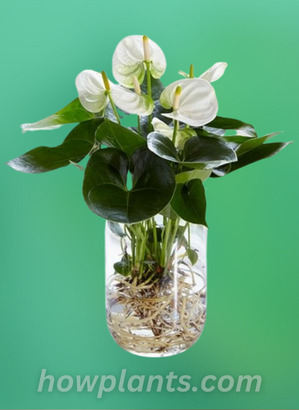
Do Anthuriums like to be root bound?
Anthuriums like to be root bound for the best growth. This will help to keep the soil moist and cool, and will also help to prevent pests and diseases from attacking the plant.
Anthurium Regale Hybrids
Anthurium regale hybrids are produced by crossing Anthurium regale and Anthurium × fernaldianum hybrids. Anthurium regale is a cross between an Anthurium and a Fernaldianum, both of which are members of the genus Anthurium. The Anthurium × fernaldianum hybrid is a cross between an Anthurium and a Fernaldianum, which is a hybrid of an Anthurium and a Fortunella.
Plants that are Similar to Anthurium Regale
Some plants that are similar to Anthurium regale are Dicentra spectabilis, Dicentra canadensis, and Dicentra major. All of these plants have white or light-colored flowers that are typically arranged in a crown or spike on top of a stem. Anthurium regale is also similar in that it has a strong, sweet fragrance.
Anthurium Regale VS Anthurium Clarinervium
Both Anthurium regale and Anthurium clarinervium are beautiful anthuriums, but there are a few key differences between the two plants. Anthurium regale is a little taller and has a more robust stem than Anthurium clarinervium. Anthurium regale also has a more pronounced purple coloration on the tips of its leaves, while Anthurium clarinervium has a more subtle coloration. Anthurium regale is also a little more difficult to grow than Anthurium clarinervium, but the rewards are well worth it.
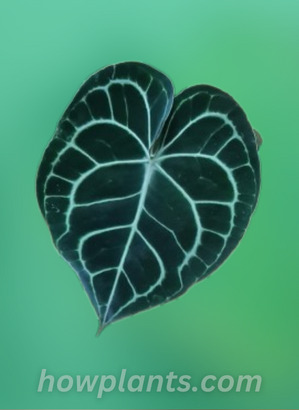
Anthurium Regale VS Anthurium Warocqueanum
The Anthurium regale is a more common variety found in the wild, while the Anthurium warocqueanum is a rarer and more endangered species. Anthurium warocqueanum is a smaller plant with a more delicate appearance, and it is also less common in the wild. Anthurium regale is more commonly available in cultivation, and it is also more likely to be found in the wild.
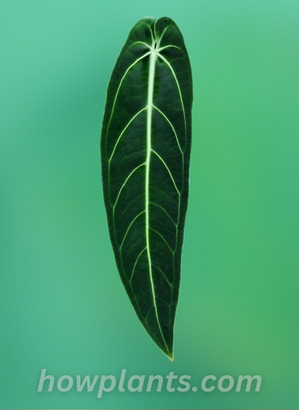
Anthurium Regale VS Anthurium Andraeanum
Anthurium regale is a more ornamental species of Anthurium and is typically found in more humid areas. Anthurium andraeanum is a more common species that is found in drier areas. Anthurium regale has a more lance-like stem and Anthurium andraeanum has a more stem-like stem. Anthurium regale also has more petals and Anthurium andraeanum has more sepals. Anthurium regale is also more colorful than Anthurium andraeanum.
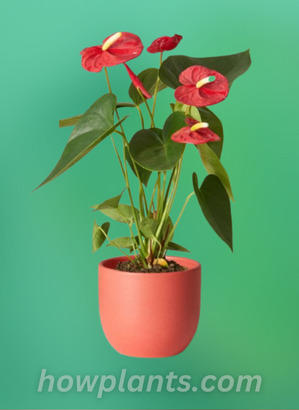
Anthurium Regale VS Anthurium Magnificum
The Anthurium regale is a more delicate looking Anthurium and is often thought to be more difficult to grow. Anthurium magnificum is a larger and more robust Anthurium and is more popular among growers.
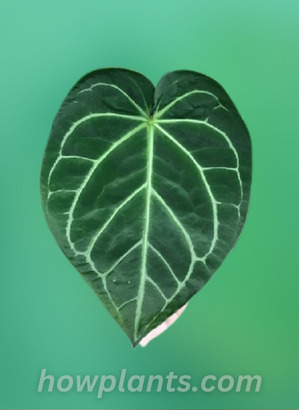
Anthurium Regale VS Anthurium Dressleri
The Anthurium regale is a beautiful anthurium, with a deep red stem and large green leaves. The Anthurium dressleri is a smaller anthurium, with a green stem and smaller leaves.
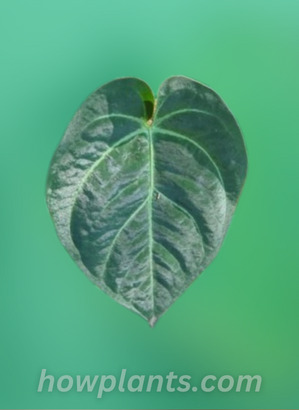
Anthurium Regale VS Anthurium Crystallinum
Anthurium regale is a species of plant in the family Araceae. It is endemic to Ecuador.
Crystallinum is a species of plant in the family Araceae. It is endemic to Ecuador.
The two species are similar in appearance, with anthurium regale having a more variegated leaf surface and crystallinum having a more uniform leaf surface. The two species can be distinguished by their pollination habits. Anthurium regale is pollinated by bees, while crystallinum is pollinated by bats.
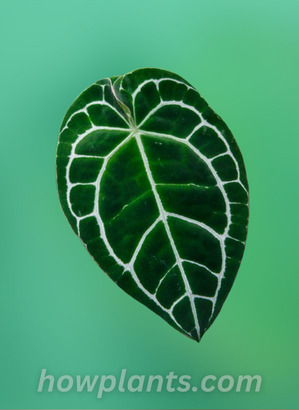
Anthurium Regale VS Anthurium Forgetii
The Anthurium regale is a beautiful plant, and it can be difficult to tell the difference between it and the forgetii. Anthurium regale has a more slender stem, and the leaves are slightly more pointed. The flowers of the Anthurium regale are also slightly larger. However, the Forgetii is a beautiful plant too, and it can be difficult to tell the difference between it and the Anthurium regale.
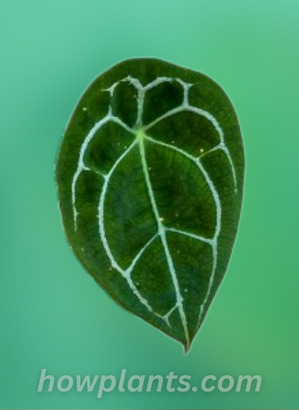
Summary:
In conclusion, Anthurium regale is an exciting and rewarding plant to grow indoors. With the right care, it can produce lush foliage and beautiful flowers year round. Providing your Anthurium with bright but indirect sunlight, regular watering, ample humidity, and high-quality soil is key to its success. Additionally, fertilizing during the blooming season and keeping the plant away from cold drafts will help ensure its continued health.

1 thought on “Anthurium Regale: Care Tips For Indoor Houseplant”